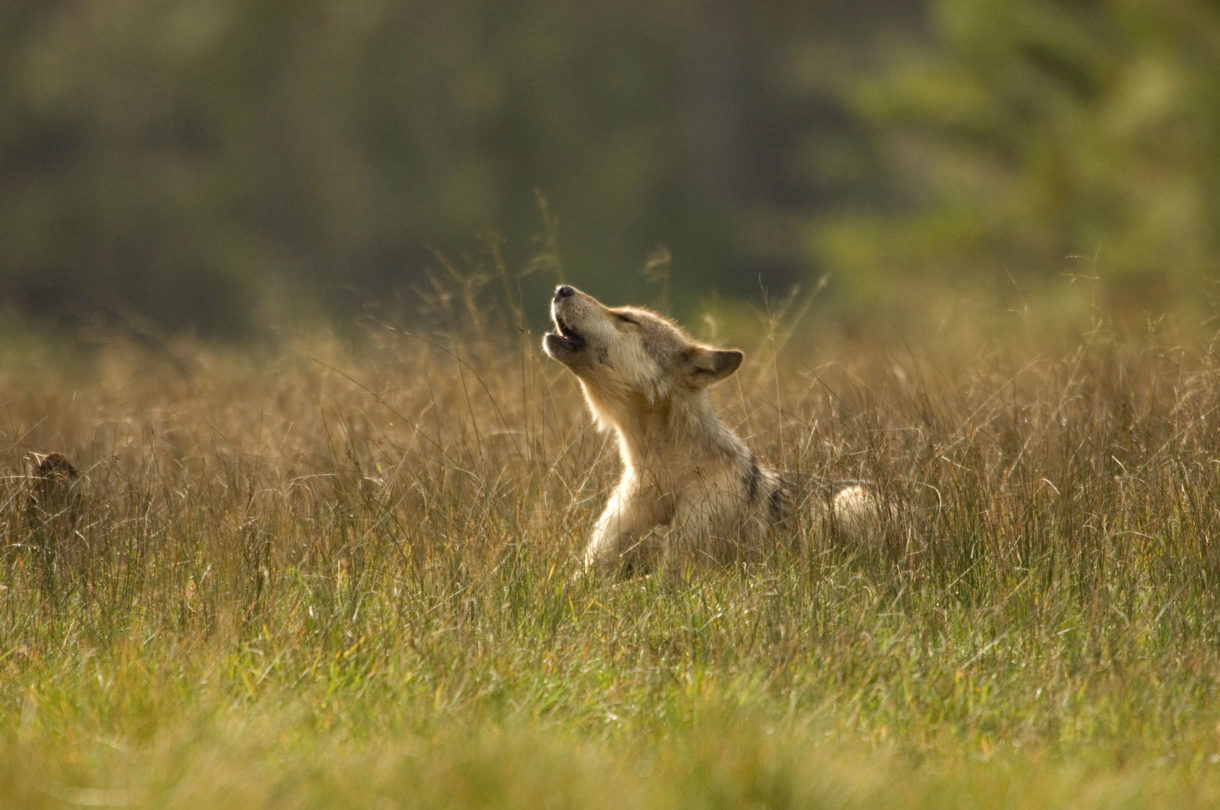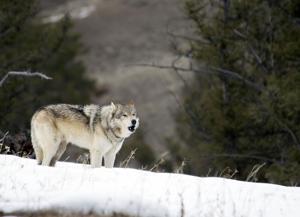Cases of wolves killing
livestock in Michigan are extremely rare, amounting to just 0.0005
percent of livestock deaths in 2015.
Photo by Alamy
By Wayne Pacelle
December 6, 2016
One of the most disturbing and sobering examples of the
misuse of political power comes out of Michigan – and it has nothing to
do with the astonishingly close presidential race of 2016. It concerns
the unusual,
years-long obsession of a few lawmakers
who want to clear a path for trophy hunters and commercial trappers to
take the lives of too many of the state’s few hundred wolves.
Right now, Michigan state senator Tom Casperson – who is completing
the final two years of his second term, after losing a Republican
primary for a U.S. House seat that overlaps with his current district –
is pushing his fourth wolf-hunting bill in the state legislature. Yes,
his fourth bill.
He’s been effective in moving this series of bills, but, at the same time, painfully ineffective.
In 2014, he engineered the passage of three wolf-hunting bills, each
with slightly different provisions. Each one of them has since been
nullified – two by the voters and, most recently, one by a
Michigan appellate court.
That’s why he’s at it again with SB 1187.
The problem is, with
two voter referendums in the rearview mirror, he’s working in direct contravention of the will of the state’s voters.
In 2014, at the urging of The HSUS – which helped to qualify
referendums to challenge Casperson’s bills – voters were emphatic in
rejecting both wolf-hunting measures. By 10 percentage points, voters
rejected Proposal 1, a measure to declare wolves a game species and to
allow a trophy-hunting season. An even larger percent of voters — 64
percent in all — opposed Proposal 2, which sought to give the Natural
Resources Commission the opportunity to establish a hunting season on
wolves. In fact, every single county in the Lower Peninsula (and
Chippewa County in the Upper Peninsula) voted “no” on Proposal 2.
These were the first two public votes on the issue of wolf hunting in
the nation, and, as a result, Michigan lawmakers are in the enviable
position of being able to gauge with precision how their constituents
feel about the election. If elections are to matter as a reflection of
the public will – and they surely do – it’s clear that the people of
Michigan do not support the trophy hunting and trapping of wolves.
The third Casperson measure – which, among other provisions, also
provided the authority for the NRC to set a season on wolves – was
struck down by the courts two weeks ago because it contained provisions
entirely separate from
the wolf-hunting issue. The Michigan Court
of Appeals rightly found that the measure was a “Trojan Horse” that
cynically and unconstitutionally misled voters by touting unrelated
benefits while “surreptitiously slipping [in]… a reenacting provision to
ensure that regardless of the referenda votes on PA 520 and PA 21,
wolves would be on the game species list.”
Not only are wolves scarce in number, they are inedible, act as a
firewall against the spread of Chronic Wasting Disease, and serve as a
lure for tourists to come to Isle Royale and to the Upper Peninsula. As
recently underscored by a
Michigan DNR/University of Notre Dame study,
wolves play a significant role in the Great Lakes ecosystem by reducing
unhealthy densities of white-tailed deer, which in turn protects timber
stocks and agriculture crops by reducing deer overbrowse. And by
controlling deer populations, wolves can also help to mitigate the risk
of car-deer collisions. Thus, wolves can benefit agriculture, public
safety, water quality, and ecosystem health.
The Michigan Department of Natural Resources already provides the
state’s ranchers with fencing, fladry (rope with flapping flags), and
guard animals to protect livestock from native carnivores, and has
stated that these methods are highly effective. Michigan livestock
owners are also compensated for confirmed or even suspected losses to
wolves. Still, cases of wolves killing livestock in Michigan are
extremely rare, amounting to just 0.0005 percent of livestock deaths in
2015. This percentage is even lower than the U.S. Department of
Agriculture’s nationwide statistics, which put wolves at the very
bottom, at 0.2 percent, of the list of hazards to livestock that
includes respiratory, digestive, and calving problems, weather, disease,
lameness, injury, theft, and even vultures.
Scientific studies have amply demonstrated that indiscriminate
killing of wolves by hunting is not only ineffective at mitigating
conflicts with livestock, it could even make those few problems worse by
dispersing packs and sending inexperienced juvenile wolves out on their
own
. On the rare occasion when wolves have been
spotted in populated areas of the Upper Peninsula, it has typically been
the result of humans drawing them into town by feeding deer, wolves’
preferred prey. Even in those instances, the wolves did not threaten or
harm humans. And again, even though wolves in Michigan are currently
protected under the federal ESA, they can still be killed in the event
that they actually pose a threat to human safety. Further, recent
stories of wolf sightings on private property in towns such as Marenisco
have not been substantiated, nor were official reports of those
incidents filed with the Michigan DNR, as is required to maintain
accurate records on any wolf-human conflicts. We should not let
irrational fears or irresponsible human behavior be used to justify the
trophy hunting and trapping of this vital species.
Senator Casperson had two of his bills overturned by citizens and one
by the courts. He ran for election to federal office and was defeated
in the primary. What part of “no” does he not understand? A
virtual flood of scientific studies in the past few years have made it abundantly clear: there is
no justification
for killing wolves simply for trophies, out of hatred, to protect
livestock, or in a misguided attempt to boost prey species for hunters.
In 2014, along with the wolf referendums, Gov. Rick Snyder was on the
ballot. He won a commanding win over Democrat Mark Schauer. Proposal 2 –
which most closely resembles Casperson’s current bill – got close to
250,000 more “no” votes than Gov. Snyder got “yes” votes in his
convincing win. That immense popular support for wolves should provide
plenty of reason for the governor to send Casperson’s latest bill into
the ash heap.
source









